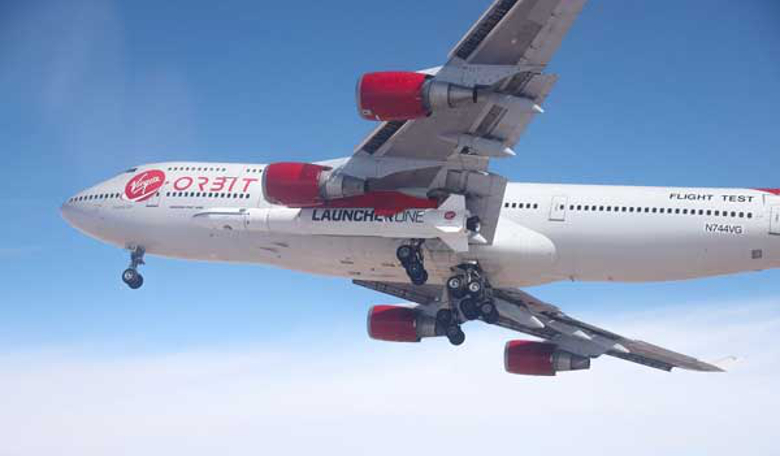Virgin Orbit are toasting the success of a flawless test flight for its modified Boeing 747 Cosmic Girl as it performs its first captive carry of LauncherOne – a 70-foot-long rocket that is strapped under its wing.
LauncherOne is a carbon-fibre two-stage rocket that is designed to deliver small payloads between 300 - 500 kilograms into orbit, but unlike traditional launch vehicles that take off from a stationary and upright position, the LauncherOne rocket gets a lift into high altitude with the aid of a customised former passenger aircraft.
This pairing has the advantage of being highly mobile, as the 747 can take off from any normal horizontal runway around the world.
The test flight, which lasted 80 minutes, was described as “a picture-perfect flight, and a major step forward in the company's quest to bring a new capability to small satellite launch, said Virgin Orbit CEO Dan Hart.
Cosmic Girl “flew like a dream” said Virgin Orbit Chief Pilot Kelly Latimer of the company’s flying launch pad. “Everyone on the flight crew and all of our colleagues on the ground were extremely happy with the data we saw from the instruments on-board the aircraft, in the pylon, and on the rocket itself. From my perspective in the cockpit, the vehicles handled incredibly well, and perfectly matched what we’ve trained for in the simulators.”
This positive performance paves the way for a series of successive tests, one of which will be a drop test, during which a rocket will be released from Cosmic Girl, as the company pushes to deliver its first cargo into space by the end of 2019.
91 known launches from seven nations and space ports in eight different countries managed to get off the ground in 2017 - a figure that sounds reasonable enough, but falls somewhat short of true potential say Virgin Orbit. The company therefore has designs on scaling up launch rates to an unprecedented frequency and its LauncherOne system ‘is a great place to start,’ reports the company’s website.
To this end, Virgin Orbit has already begun to build and test rockets for subsequent missions at its manufacturing facility in Long Beach, California. The company state that up to 24 rockets per year will be built at the facility, part in thanks to a partnership with DMG Mori, which has provided Virgin Orbit with the world’s first hybrid additive-subtractive manufacturing machine that reduces the rocket production cycle by months.
“There’s still important work to do,” concluded Hart. “But I know our team and our customers were all thrilled to see us taking this important step forward.”











